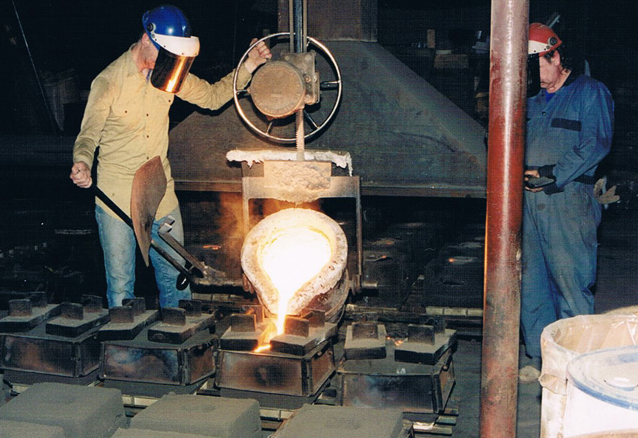Sand casting is a frequently used manufacturing process, what is needed for this process, and what are the common pattern materials?

What is Needed for Sand Casting?
Sand casting is a popular method for producing metal parts and sculptures, and typically requires the following materials and equipment:
1) Materials:
Casting sand: a special type of sand that is able to hold its shape when packed around a pattern.
Pattern: a model of the object to be cast, typically made of wood, plastic, or metal.
Molding box: a container used to hold the sand and pattern.
Parting compound: a material that is applied to the pattern to prevent the sand from sticking to it.
Sprue: a channel that allows the molten metal to flow into the mold.
Risers: additional channels that allow air to escape from the mold and prevent defects in the casting.
Metal alloy: the material that will be melted and poured into the mold.
2) Equipment:
Furnace or melting pot: a device used to melt metal alloy.
Ladle: a tool used to transfer the molten metal from the furnace to the mold.
Tongs: a tool used to handle hot mold and metal.
Ventilation equipment: sand casting produces a lot of dust and fumes, so it’s important to have proper ventilation to avoid health risks.
Safety gear: gloves, goggles, and a face shield are essential for protecting yourself from the hot metal and sand.
What are the Common Pattern Materials for Sand Casting
The most common pattern materials for sand casting are wood, metal, and plastic. Each material has its own advantages and disadvantages, depending on the specific application and the complexity of the pattern. Here are some of the characteristics of each material:
1) Wood: Wood patterns are the most traditional and widely used pattern material for sand casting. They are relatively easy to carve and can be used to create complex shapes and details. However, wood patterns are not very durable and can be prone to warping and splitting.
2) Metal: Metal patterns, typically made of aluminum, are more durable and can be used for larger production runs. They are also more accurate than wood patterns and can be easily modified or repaired. However, metal patterns are more expensive than wood patterns, and are heavier and harder to handle.
3) Plastic: Plastic patterns, made of materials such as polystyrene or polyurethane, are a relatively new development in sand casting. They are lightweight, easy to handle, and can be produced quickly using computer-aided design (CAD) and 3D printing technology. However, plastic patterns are not as durable as wood or metal patterns, and may not be suitable for high-volume production runs.
Ultimately, the choice of pattern material will depend on factors such as cost, durability, and complexity of the pattern.

